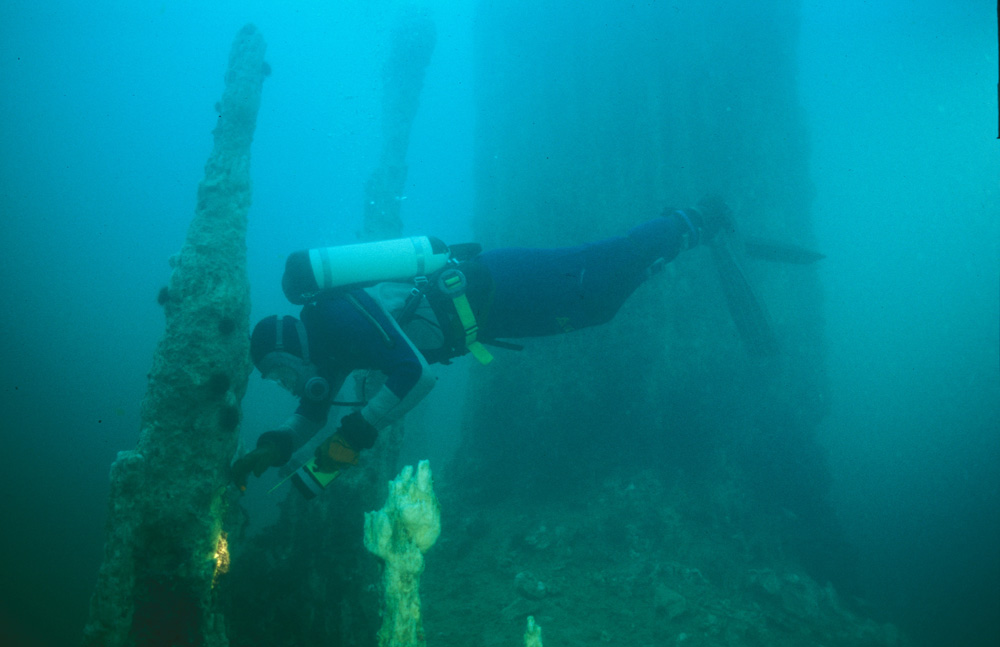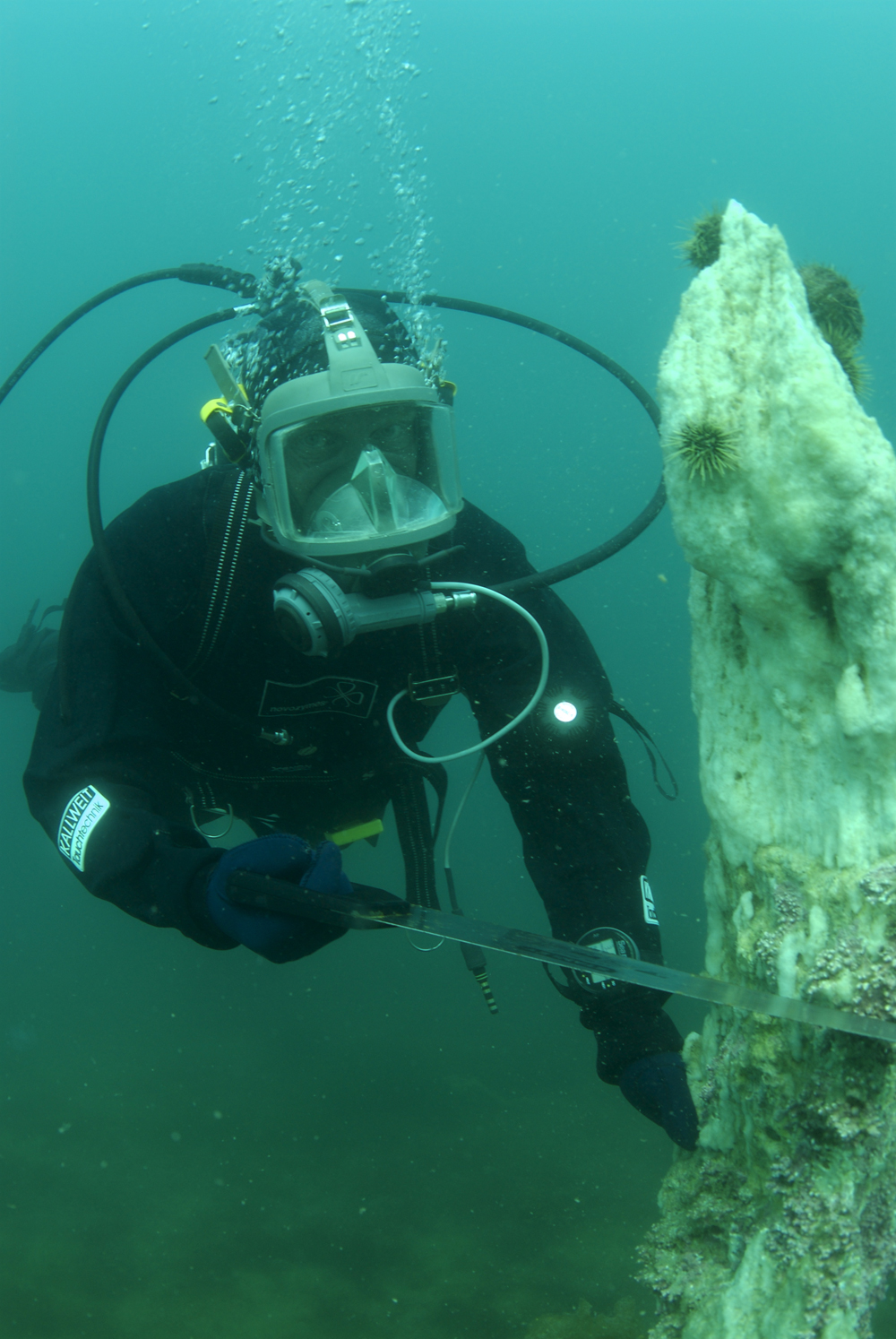As waters warm, scientists are working fast to tease secrets from Greenland’s unique underwater mineral columns
The high-alkaline, low-temperature conditions of the Ikka columns has created a unique habitat for bacteria.

Known to occur just a few places in nature, the mineral ikaite forms only under very specific conditions, when a carbonate and a source of calcium combine under specific conditions at low temperatures. To date, most deposits of ikaite have been found in high-latitude marine sediments, in places such as Antarctica, the Sea of Okhotsk and in the waters off British Columbia.
Even rarer still are underwater columns composed mainly of the mineral. Found only in Ikka Fjord in Greenland, these columns are formed where lime-rich groundwater from submarine springs on the floor of the fjord meets cold seawater as it rises to the surface.

Despite varying in height, the columns never rise to more than six feet (2 meters) below the surface of the water, an effect of the higher levels of freshwater closer to the surface, and the grinding of the sea ice that forms on the fjord between November and May.
Between 600 and 1,000 ikaite columns have been identified, and, each spring since 1995, biologists and geologists have visited the mineral’s namesake Ikka Fjord (formerly spelt ‘Ika’) to determine the effects of warming water temperatures on the columns and their growth.
This year’s field work, concluded in June, found that while the water remains under the 50 degrees Fahrenheit (10 degrees Celsius) threshold needed for the columns to be able to form, the temperature in recent years has risen. Should temperatures get too warm, new ikaite would not be formed. Worse, ikaite breaks down when exposed to warm temperatures; for the columns that already exist, warm water would result in their disintegration.
Studying the Ikka columns is more than just matter of keeping an eye on how well they are keeping up, however. One of the features of the columns is that even though the fluid flowing through the ikaite columns is highly alkaline, they are host to a wide range of bacteria that do not exist in the surrounding water. A comparison of the bacteria has shown similarities with species living in similar environments in North America and Russia, though none of these bacteria live in cold water. What’s more, about of a third of the bacteria living in the columns are found nowhere else.
Preserving the columns is out of the hands of the scientists who study them, but saving them, they say, is more than just matter of biodiversity for biodiversity’s sake.
Studies, for example, have shown that despite living in the highly alkaline environment of the columns, the bacteria themselves have a neutral acidity, identifying the enzyme the bacteria use to be able to achieve this could lead to improvements in industrial or commercial products, such as laundry detergents that can wash at lower temperatures or lactose-free milk that can be produced without being heated.
Research into cold-water enzymes is conducted in other parts of the Arctic, but the combination of enzymes that function in a high-alkaline, low-temperature environment, say scientists, is unique to the Ikka columns.
CORRECTION: An earlier version of this story incorrectly reported that the ikaite columns are found in two fjords. Rather, they are unique to Ikka Fjord. Additionally, an earlier version incorrectly stated that the mineral is highly alkaline. In fact, it is the fluid flowing through the columns that is alkaline. This story has been updated to correct these errors, to clarify how ikaite forms in Ikka Fjord and elsewhere, and to clarify some information in photo captions.